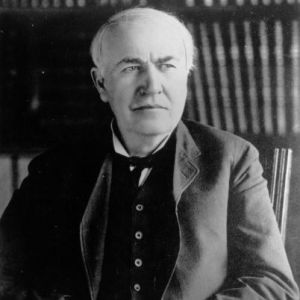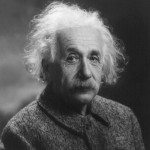Thomas Edison
Inventor
Stats:
Famous:
Created the world’s first industrial research laboratory and think tank.
Held 1,093 patents on inventions that he and his employees created, making him the most prolific inventor of the 20th century.
Invented a motion picture camera, the “kinetograph.” This led to the exhibition of silent movies on the “vitascope,” a projection system that he also invented.
Invented the phonograph, the first machine that could both record and reproduce sound. He also coined the term “megaphone.”
Invented nickel-iron batteries, which helped to improve the battery life of the first automobiles.
Freethinker:
Not-So Psychic. When questioned on supernatural phenomena, he critiqued the psychic researchers for their inability to generalize an experiment to get results. When asked about working on psychic research, he was quoted as saying “Existing experimenters seem to be working, all of them with details. This great generalizer will not work with details, he will not call his work ‘psychic research.’ He will study the problem with an especially adapted intelligence and on broad lines, and he will work through the material.”
All in This Together. Edison did not believe in a Supreme Creator or heaven and hell. Instead, he believed that all people make up an aggregate, or a community where everyone works together and is a piece in a larger system (like the cells that build a person’s body). Just as half the cells in a human body wouldn’t be punished and the other half rewarded for behaviors, he believed humanity would have the same benefits and troubles united.
Believe It or Not. Edison did believe in the Golden Rule, which says that you should treat others how you would like to be treated. He also believed that the main teachings of Buddha, Confucius, and Jesus could be boiled down to the Golden Rule.
Interesting Facts:
Edison made his first laboratory at the age of ten, when his mother gave him an elementary book of experiments. He used all of his money on purchasing chemicals. His uncle tried bribing him to come out of his lab and read a book for a penny, but Edison took the penny and bought more chemicals to further his experiments.
Edison was partially deaf and liked it better that way, since it helped him concentrate on experiments. He claimed his deafness was connected to a train conductor picking him up and boxing his ears; however, it’s more likely to have genetic causes since both his father and brother suffered from hearing loss.
Edison spent a lot of time at the train station, where he had a job selling newspapers and candy on a train car. In a baggage car he set up a lab and a printing press, where he printed the first paper published on a train.
When Edison was fourteen he saved a young boy from a runaway boxcar. The boy’s father was so grateful that he taught Edison how to use a telegraph machine.
Edison famously tried over 9,000 different materials for light bulb filaments before finding an acceptable material.
Not all of Edison’s inventions worked! He tried creating molds for houses made entirely of concrete. Not just the house, but the fixtures as well! There were concrete bathtubs, pianos, and picture frames. After creating the houses and trying to sell them at a third of the cost of a normal home, not a single one sold. He modified his idea to the creation of furniture, but after the failure of concrete houses, he couldn’t sell the furniture either



